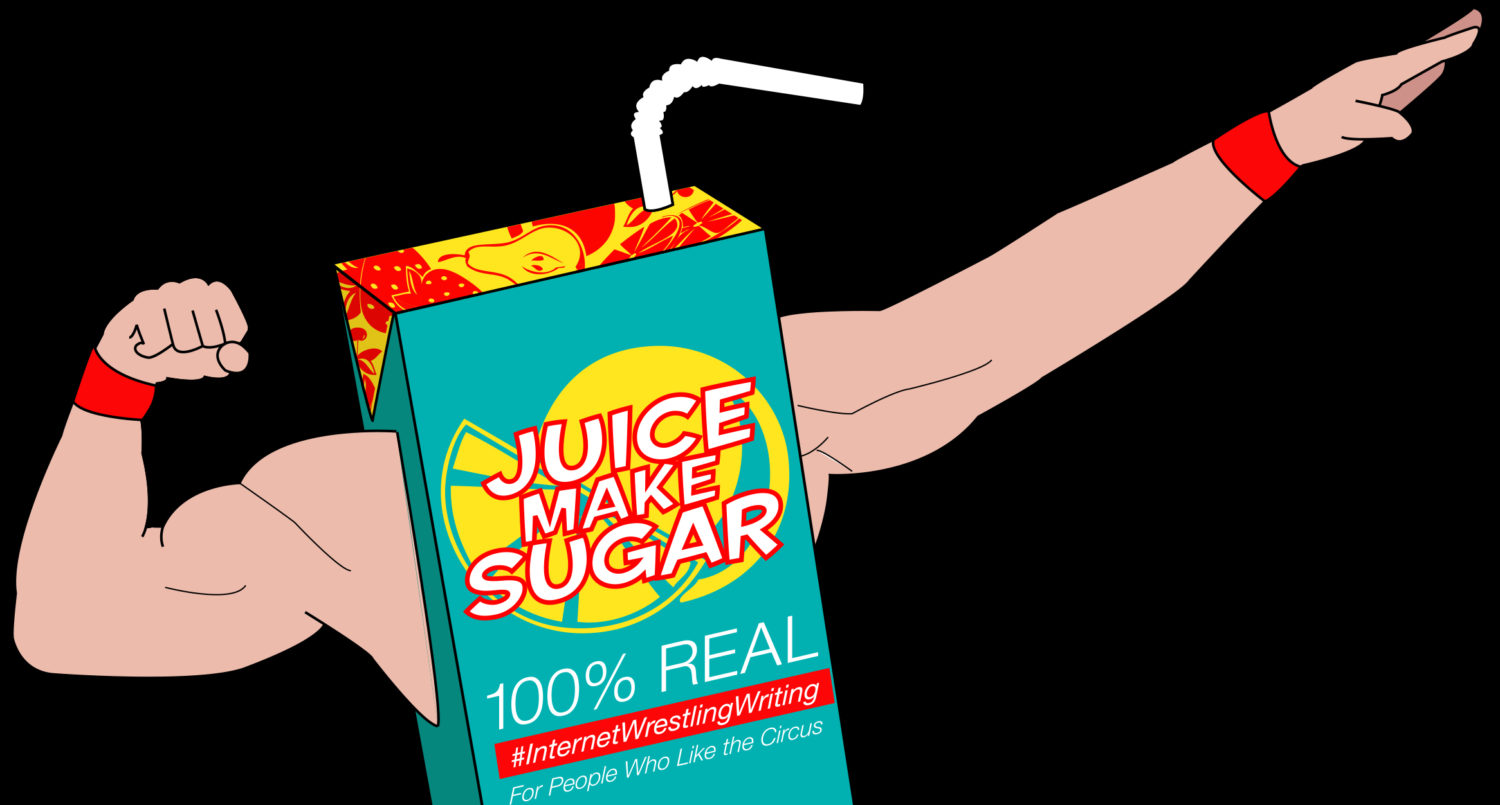A major part of the narrative fans like to tell about Randy Orton is the perception that he was hand-picked from a young age to cruise up the WWE’s ladder and became one of the top stars in the business on scholarship. This is the story of how that isn’t the story. This is the story of how Randy Orton embraced an opportunity, worked hard, improved exponentially, and exploded out of the shadow of a famous father to become one of the definitive stars of the era.
Randy Orton didn’t debut on Raw the day after Wrestlemania or appear as the mystery partner/opponent of some big star at a pay per view; he made his first main roster appearance on an April episode of Smackdown in 2002. He didn’t have a big, pyro-filled entrance or a flashy, devastating finisher. He had shiny jobber trunks and beat Hardcore Holly with a sloppy Oklahoma Roll.
Beyond his signature dropkick, the fresh-faced Orton’s offense is almost unrecognizable. From the way he throws punches to his awkward jumping-bulldog/face-crusher thingy, the future champion looks anything but main event in his match.
While a young Randy Orton was green in the ring and less-than polished on one-to-one promos, the WWE kept his push going with major league video packages like this one. The vignette is masterly produced in that it calls upon his pedigree by showcasing his father, enhances fans’ perception of him as a wrestler by displaying some carefully-chosen match highlights, and makes him look like a big star with breathless female fans waiting for autographs.
With #LexLugerWeek only two weeks behind us, you know that even gale force winds in a wrestler’s sails are useless if his boat is made of stone. Luger received a red, white, and blue bus-sized push in the WWF, but failed because his in-ring work and personality was never ten percent as impressive as what his push and his body promised.
Less than six months after his debut against the decidedly-midcard Holly, Orton was wrestling World Champion Brock Lesnar in a television main event. Orton spends most of the match selling for the dominant champion, but his flurries of offense are far better-executed and well-received than his awkward, poorly-timed sequences of only a few months before.
From a kayfabe perspective, there are two kinds of jobs you can do for the champion: the job where he destroys you and the job where you look like you can hold your own against him. Orton’s early match against Lesnar is decidedly the kind of match where the champion destroys the challenger, but stepping outside of kayfabe, Orton holds his own as a performer against one of the most physically-taxing opponents ever to step into the ring. Less than nine months into his main roster run, Orton had already proved he could hang with the biggest main event stars.
Like so many of wrestling’s great performers, Randy Orton came into his own as a character when he turned heel. In a creative angle that playfully combined a real-life shoulder injury and the legacy of the legendarily spurious arm injury suffered by his father in the 1980s, Orton boo-hooed and sneered in a way that would ensure he would never wear shiny jobber trunks ever again.
http://www.dailymotion.com/video/x2qcus
Shortly after he turned heel, Orton became a made star for life when he became a member of Evolution, a group that featured the best and most respected wrestler of all time (Ric Flair) and the industry’s biggest power broker (Triple H). A cynic would say that being a lackey for Triple H put Orton in the no-pressure catbird seat, but Orton didn’t coast. He played the smug, womanizing high school football player to the hilt, and even though he was supposed to be portraying a boy among men in Evolution, Orton grew and improved to the point where he undeniably seemed like the future of the WWE.
Given his huge improvement in the ring, his deepened character, his great look, the hectic booking style of the time, and the WWE’s desire to remove Brock Lesnar’s memory from their record book (It truly was a different time!), Randy Orton became the youngest World Champion in WWE history only two years after his debut, defeating HE WHO SHALL NOT BE NAMED at Summerslam 2004.
Thanks to his own incredible growth over his short main roster career and the fact that HE WHO SHALL NOT BE NAMED never had a bad match at a big show, Summerslam made Randy Orton a legitimate main event, championship level star. Was he too young? Maybe. Were there more over stars on the roster? Probably. Would Orton have eventually become a long reigning champion, whether it was ‘02, ‘04, ‘07, or today? Absolutely.
Having been baptised (insert “Baptista” joke here) in the Jordan by Flair and Hunter, Orton was ready to strike out on his own and create his own following rather than being part of theirs. Of course, in the world of wrestling, nobody can just say, “Hey, it’s been nice working with you, but I’m gonna go do something else,” so this happened:
And so it was that Orton was removed from Evolution in such a simultaneously unceremonious and spectacular manner that he was instantly a made star. Orton would go on to dominate the next decade, help define an era, and come to represent the changing of the guard from the main event style of the Attitude Era to whatever it is that we call this thing now. More on that tomorrow, though…


RT @JuiceMakeSugar: #RandyOrtonWeek: Essential Viewing, Part One w/ @DaveTheMark http://t.co/EuiwpM38yN
[…] Part 1 of this week’s Essential Viewing, we traced the journey of Randy Orton form generic babyface midcarder to made star and World […]